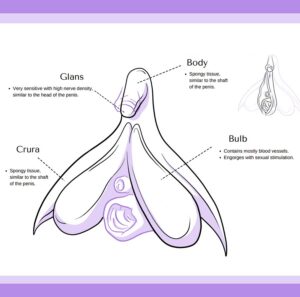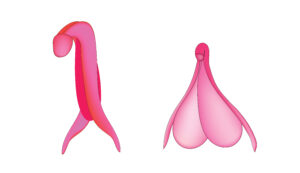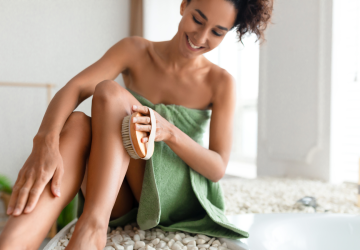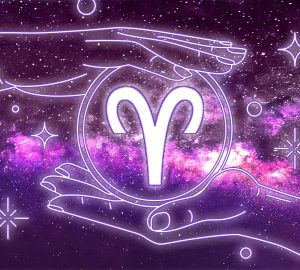Explaining the Clitoral Complex
What It Is and How to Get More Pleasure
Oh, the magical clitoris. That famous, tiny little spot that when aroused can make you see the stars. This well-kept secret is the key to orgasm (more than 80% of women need clitoral stimulation to orgasm during sex).
But the clitoris has been plagued with misinformation for centuries. In the 16th century, anatomist Andreas Vesalius insisted that healthy women did not have a clitoris. A 1486 guide for finding witches calls the clitoris the “devil’s teat” and if a woman was found to have one, she was declared a witch. In the 1800s, women suffering from hysteria underwent clitoridectomies, the surgical removal of the clitoris. Even today, many women have trouble communicating with their partner that they need this stimulation to orgasm during sex.
We knew little about this secret spot… until now. In fact, it’s not just a little spot found over the urethral opening. It’s actually about 10 centimeters long. Dr. Christine Vaccaro, a member of the PBF Board of Medical Directors who focuses on pelvic floor disorders, writes a little more about what makes up the clitoral complex.
“The clitoral complex is a 3D structure that is only partially visible but is mostly hidden within the vulva and draping over the vaginal opening. What we see is only the ‘tip’ of the iceberg (pun intended)! The clitoral complex is comprised of the glans, the body, the paired crura, and the bulbs. When measured from the tip of glans to the end of the crura, it is approximately 10 cm in length (almost 4 inches!),” says Dr. Vaccaro.
Let’s go over the main components

Glans clitoris
This is the only visible part of the clitoris complex. We can only see one-fifth of the entire structure. In fact, the entire complex is named for the glans clitoris. It comes from the Greek word “kleitoris,” which means little hill or to rub. This is the part with the most nerve endings, which means it’s also the place with the most sensation.
The body
This part of the clitoral complex goes upwards into your pelvis and attaches via ligaments to the pubic bone.
Crura
There are two of these which extend like brackets from the glans clitoris and into the tissue of the vulva on both sides.
Vestibular bulbs
These extend on either side of the vaginal orifice. These are usually stimulated through the inside of the bottom of the vagina. Erectile tissue makes up the clitoral bulbs. When aroused, they become engorged and allow more pleasure.
Did you know?
The clitoris and penis are related
You may be thinking erectile tissue, and engorged sound like words that would describe a penis. That’s because the clitoris and penis come from the same developmental tissue. At 10 weeks of fetal development, the Y chromosome on male DNA activates the genital tissue to develop into a penis, instead of the clitoris. The big differences are that the clitoris is smaller and mostly internal, while the penis is larger and external. You can even see the similarities in pictures.

The main function
The clitoris has only one function: pleasure. On the other hand, the penis has multiple functions that include urination, fertilization, and pleasure.
What is the G-spot?
Some researchers say the G-spot isn’t actually a spot, but it’s the place where the sides of the vestibular bulbs make contact with the wall of the vagina. This means that even when you orgasm from penetration, the clitoris is responsible.
How to stimulate the clitoris
Now that we know exactly what the clitoral complex is, how can we make the most of this knowledge for our pleasure?
Dr. Vaccaro says, “Most women need direct clitoral stimulation, externally, internally, or both, to achieve orgasm. Every woman is different though, which is why self-exploration is so critical. Sometimes a mirror is helpful to explore your own anatomy. Some sex toys are specifically created to enhance clitoral stimulation, usually through vibration, and aid in pleasure of the external clitoris, the internal clitoris, or both. The clitoral glans is the most highly innervated portion and thus the most sensitive, which is why external stimulation is so important!”
Let’s look at some ways you can explore and increase your orgasms!
Get comfortable
Kick of your shoes (and any other clothing) and get comfy. Light a candle, put on your favorite music and set the mood. You know what makes you comfortable, so do what works for you.
Start slow
You heard Dr. Vaccaro: self-exploration is critical! You aren’t going to find out what feels good if you just go to town in a frenzy. Start slow and explore different spots to discover the stimulation that gets you going.
Experiment with toys
While you’re exploring yourself, use some helpful tools. You can find toys with different features like The Adventurer, a double-ended vibrator with five air pressure levels to take your breath away, or Unraveled, a dual-action vibrator with a tongue-like tickler. If you’re new to toys, you can’t go wrong with a trusty bullet vibrator like Illusion.
Use a lubricant
One way to get really comfortable is by using a lubricant, which enhances pleasure and minimizes friction. A great lubricant for toys and everyday use is Just Like Me, which is a water-based lubricant that is FDA-cleared and comes in different flavors.
Stimulate from the inside
You now know that the clitoral complex is a lot more than the glans clitoris. You can stimulate the hidden parts with a penis or toy. Use a curved g-spot vibrator to get the perfect angle or stimulate two spots at once with a dual-action vibrator.
Just like women in general, the clitoris is complex (yea, we went there). But now that you have a better idea of the parts that are hidden, you can explore to have more, better, and longer orgasms.









